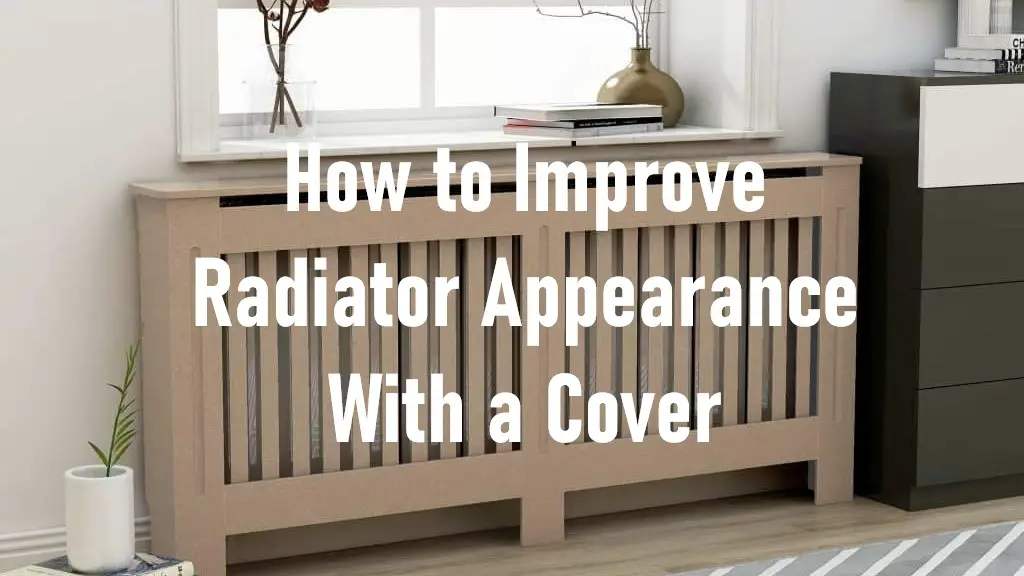Radiators are an essential part of many homes, especially during the colder months. However, they can often be an eyesore, disrupting the overall aesthetic of a room. Fortunately, there are ways to improve the appearance of a radiator with a cover. Radiator covers come in various styles and can be customized to fit the decor of any room.
Radiator covers not only enhance the appearance of a room, but they can also serve practical purposes. For instance, they can protect children and pets from accidentally touching hot radiators. Additionally, they can help to improve energy efficiency by directing heat into the room instead of being absorbed by the wall behind the radiator.
There are many options when it comes to choosing a radiator cover. From ready-made to custom-built covers, homeowners have the flexibility to choose the best option for their home. With a little creativity and effort, a radiator cover can be a stylish addition to any room.
Page Contents
Understanding Radiator Covers
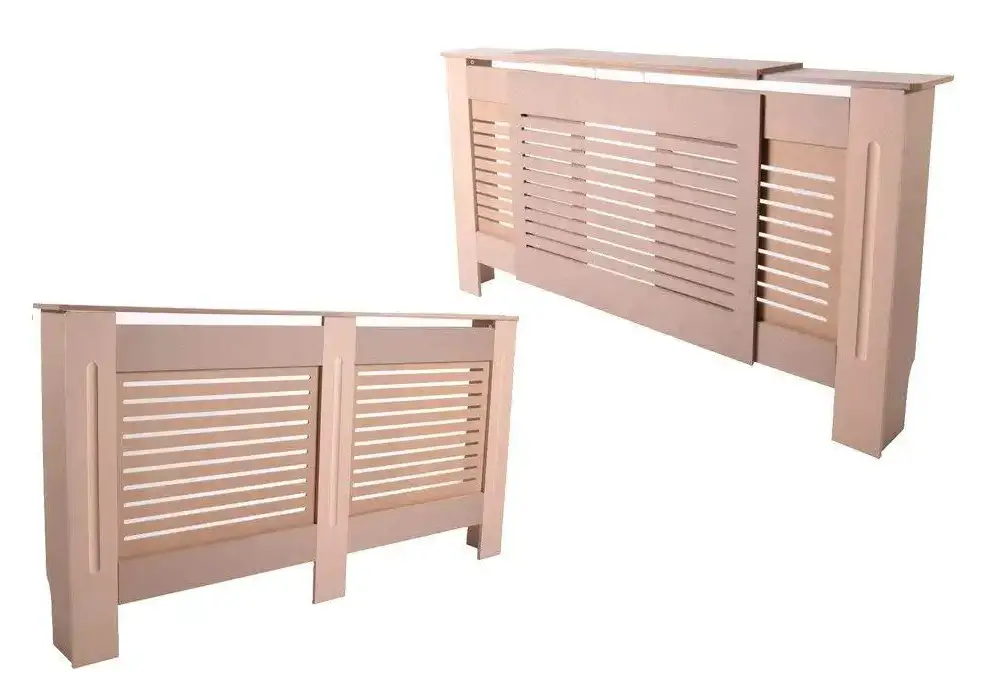
Radiator covers are a great way to improve the appearance of a radiator while also adding some functionality. They come in a variety of styles, sizes, and materials to suit different needs and preferences. In this section, we will explore the functionality and types of radiator covers.
Functionality of Radiator Covers
Radiator covers serve two main functions: improving the appearance of a radiator and providing an extra layer of safety. Radiators can be unsightly and disrupt the overall aesthetic of a room. A cover can help blend the radiator into the room’s decor, making it less noticeable. Additionally, radiator covers can provide an extra layer of safety, especially for households with young children or pets. Radiators can get extremely hot, and a cover can prevent accidental burns or injuries.
Another benefit of radiator covers is that they can help improve the efficiency of a radiator. By enclosing the radiator, the heat is directed into the room instead of being absorbed by the walls. This can help reduce energy bills and make the room feel warmer.
Types of Radiator Covers
There are various types of radiator covers to choose from, each with its own unique features and benefits. Here are some of the most common types:
- Wooden Radiator Covers: Wooden radiator covers are a popular choice due to their durability and classic look. They can be made from a variety of woods, such as oak, pine, and mahogany, and can be stained or painted to match the room’s decor.
- Metal Radiator Covers: Metal radiator covers are another option, and they are often made from aluminum or steel. They are durable and easy to clean, making them a great choice for high-traffic areas.
- Custom Radiator Covers: For those who want a more personalized look, custom radiator covers are a great option. They can be made to fit any size or shape of radiator and can be designed to match the room’s decor.
- DIY Radiator Covers: For those who are handy with tools, DIY radiator covers can be a fun and cost-effective option. They can be made from a variety of materials, such as wood, metal, or even fabric.
In conclusion, radiator covers are a great addition to any home. They improve the appearance of a radiator while also providing an extra layer of safety and efficiency. With so many types to choose from, there is sure to be a radiator cover that suits your needs and preferences.
Choosing the Right Material
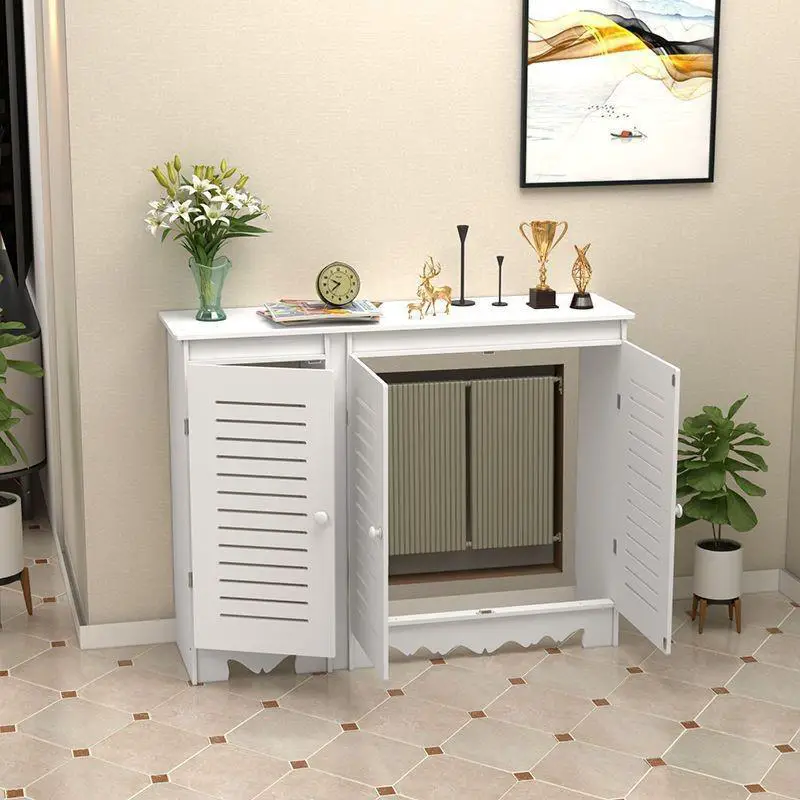
When it comes to choosing the right material for a radiator cover, there are several options to consider. The choice of material will depend on various factors, including personal style, budget, and the intended use of the radiator cover. Here are some of the most popular materials for radiator covers:
Medium-Density Fiberboard (MDF)
MDF is a popular material for radiator covers due to its affordability and versatility. It is made from compressed wood fibers and resin, which makes it strong and durable. MDF radiator covers can be painted in any color, making them an excellent choice for those who want to match their radiator cover to the room’s decor. They are also easy to customize, and can be cut into any shape or size.
Oak
Oak is a hardwood that is known for its strength and durability. It is an excellent choice for those who want a radiator cover that will last for many years. Oak radiator covers can be stained or painted to match the room’s decor. They are also easy to customize, and can be cut into any shape or size. However, oak radiator covers can be more expensive than other materials.
Metal
Metal radiator covers are a popular choice for those who want a sleek and modern look. They are typically made from sheet metal and can be painted in any color. Metal radiator covers are durable and easy to clean, making them a great choice for high-traffic areas. They are also easy to customize, and can be cut into any shape or size.
Marble
Marble radiator covers are a luxury option that can add a touch of elegance to any room. They are typically made from a single piece of marble and can be polished to a high shine. Marble radiator covers are durable and easy to clean, making them a great choice for high-traffic areas. However, they can be expensive and heavy, so they may not be suitable for all spaces.
In conclusion, choosing the right material for a radiator cover will depend on various factors, including personal style, budget, and the intended use of the radiator cover. Whether you choose MDF, oak, metal, or marble, each material has its own unique advantages and disadvantages. By considering these factors, you can choose a radiator cover that will not only improve the appearance of your radiator but also add value to your home.
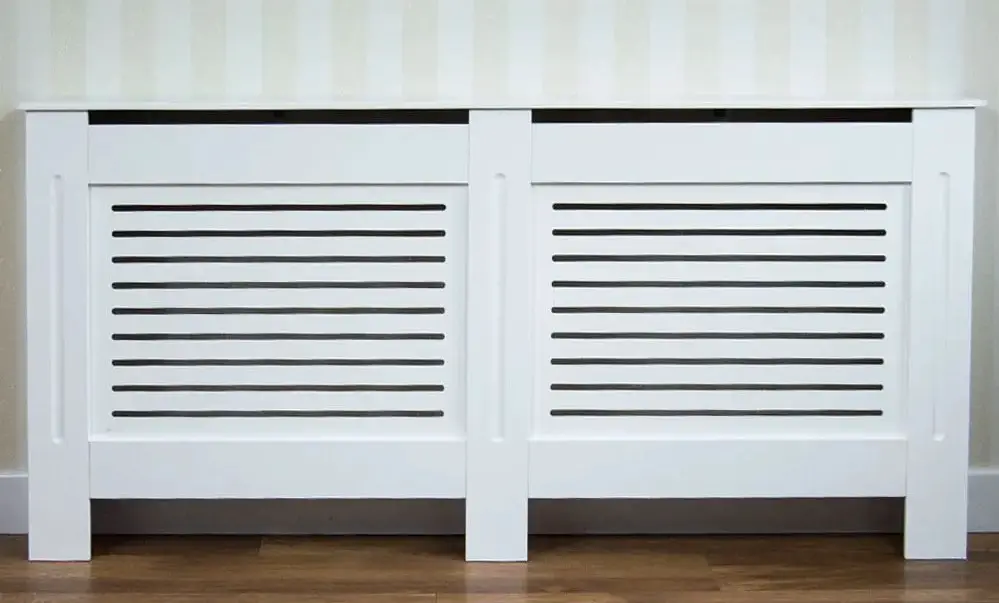
DIY Radiator Cover
One of the most cost-effective ways to improve the appearance of a radiator is by building a DIY radiator cover. Not only does it provide a sleek and modern look, but it also helps to protect the radiator from dust and dirt.
To build a DIY radiator cover, one can use materials such as MDF, plywood, or wood. The first step is to measure the dimensions of the radiator and cut the material accordingly. A table saw or circular saw can be used to make precise cuts.
Once the material is cut, the next step is to assemble the cover. A PPE such as gloves, safety glasses, and a dust mask should be worn during the process. The cover can be assembled using screws, nails, or glue. A table or workbench can be used to hold the material in place during assembly.
After the cover is assembled, it can be sanded down to remove any rough edges or imperfections. A coat of primer can be applied to the cover before painting to ensure that the paint adheres properly. A high-quality paint can be used to give the cover a professional finish.
In addition to improving the appearance of the radiator, a DIY radiator cover can also be functional. Louvers can be added to the cover to direct heat towards the room. A long, deep shelf can be added to the top of the cover to provide additional storage space.
Overall, building a DIY radiator cover is an easy and affordable way to improve the appearance of a radiator. With the right tools and materials, anyone can create a custom cover that fits their specific needs and style.
Improving Efficiency with Radiator Covers
Radiator covers not only enhance the appearance of a room but also improve the efficiency of the heating system. By trapping the heat inside the cover, it ensures that the heat is distributed evenly throughout the room, making it more comfortable to live in.
One of the biggest advantages of radiator covers is that they prevent heat loss. When the heat from the radiator escapes into the room, it can quickly rise to the ceiling, leaving the lower part of the room feeling cold. Radiator covers work by trapping the heat inside the cover, which then radiates outwards, ensuring that the heat is distributed evenly throughout the room.
Another benefit of radiator covers is that they can help to reduce the amount of water or steam that is required to heat a room. By trapping the heat inside the cover, it ensures that the radiator does not have to work as hard to maintain a comfortable temperature. This means that less water or steam is required to heat the room, reducing the overall energy consumption of the heating system.
In addition to improving the efficiency of the heating system, radiator covers can also help to protect the radiator from damage. By preventing dust and debris from accumulating on the radiator fins, it ensures that the radiator operates at peak efficiency. This can help to extend the lifespan of the radiator, reducing the need for costly repairs or replacements.
Overall, radiator covers are an excellent way to improve the efficiency of a heating system while also enhancing the appearance of a room. By trapping the heat inside the cover, it ensures that the heat is distributed evenly throughout the room, making it more comfortable to live in.
Maintaining Your Radiator Cover
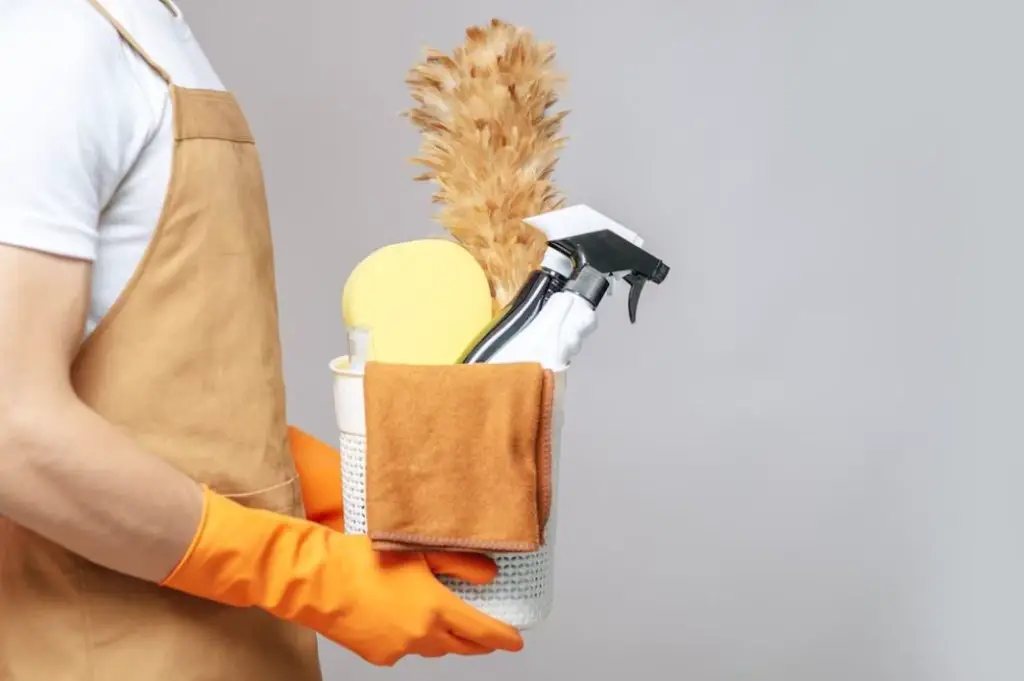
Once you have installed a radiator cover, it is important to maintain it to keep it looking its best. Regular maintenance will also ensure that the cover continues to function properly and does not interfere with the radiator’s performance.
One of the main concerns when it comes to maintaining a radiator cover is dust and debris. Over time, dust and debris can accumulate on the cover, making it look dirty and dull. To keep your radiator cover looking its best, it is important to dust it regularly with a soft cloth or a feather duster. This will help to remove any surface dust and keep the cover looking clean.
In addition to dusting, it is also a good idea to vacuum the cover periodically to remove any debris that may have accumulated in the crevices. Use a soft brush attachment to avoid scratching the surface of the cover.
If you have a metal radiator cover, you may also want to polish it periodically to keep it looking shiny and new. Use a metal polish that is appropriate for the type of metal used in your cover and follow the manufacturer’s instructions carefully.
Finally, if your radiator cover becomes damaged or discolored, it may be necessary to repaint or replace it. Be sure to choose a high-quality paint that is appropriate for the type of material used in your cover and follow the manufacturer’s instructions carefully.
By following these simple maintenance tips, you can keep your radiator cover looking its best and ensure that it continues to function properly for years to come.
Repurposing Radiator Covers
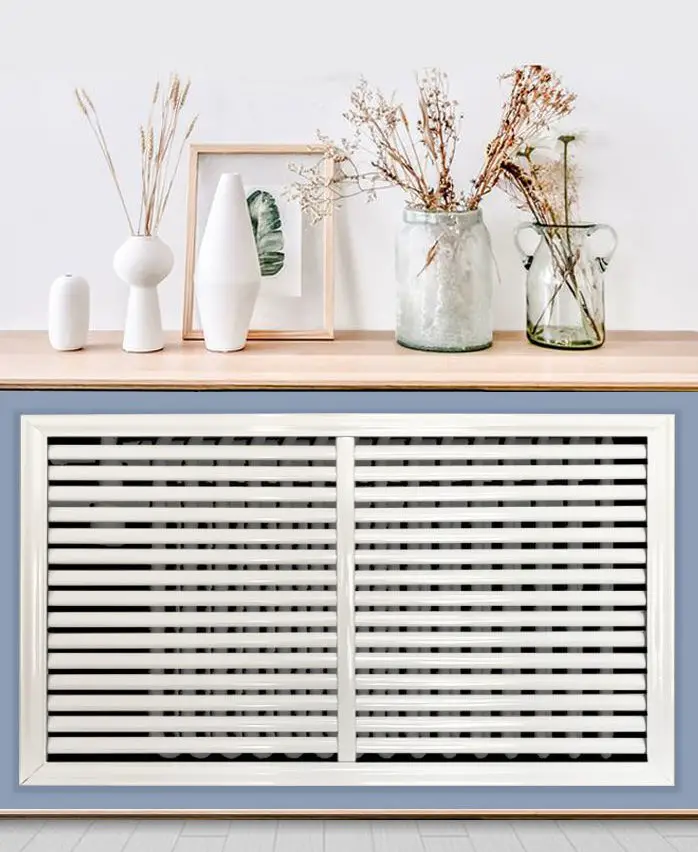
Radiator covers can be repurposed in many ways to create functional and stylish pieces of furniture. With a little imagination and creativity, you can transform an old radiator cover into a bookshelf, desk, vanity, banquette, and more.
Bookshelves
Radiator covers can be turned into bookshelves by adding shelves and painting them in a color that complements the room. The flat top of the radiator cover can be used to display decorative items or to hold books. With a little bit of carpentry skills, you can create a unique bookshelf that fits your style and needs.
Desk
Radiator covers can also be transformed into a desk by adding a tabletop and legs. The flat surface of the radiator cover provides ample space for a computer, books, and other office supplies. You can also add drawers or shelves to the desk to create more storage space.
Vanity
Radiator covers can be used to create a unique and stylish vanity. By adding a mirror and a countertop, you can turn the radiator cover into a functional piece of furniture. The flat surface of the radiator cover can be used to store makeup, brushes, and other beauty products.
Banquette
Radiator covers can be used to create a banquette by adding a cushion and some legs. The radiator cover can be painted in a color that complements the room and the cushion can be covered in a fabric that matches the decor. The banquette can be used as a seating area in a small space or as a cozy reading nook.
In conclusion, radiator covers can be repurposed in many ways to create functional and stylish pieces of furniture. By using your creativity and imagination, you can transform an old radiator cover into a unique and personalized piece that fits your style and needs.
Decorating with Radiator Covers
Radiator covers are not only functional but can also be a stylish addition to any home decor. They come in a variety of styles, materials, and colors, making it easy to find one that fits your decorating scheme. Whether you have a modern or traditional home, a radiator cover can add a touch of elegance to any room.
In the bathroom, radiator covers can be used to hide unsightly grates and pipes. They can also provide extra storage space for towels and toiletries. A wooden radiator cover can add warmth and texture to the room, while a metal cover can give it a modern, industrial look.
In the kitchen, a radiator cover can be used to create a seamless look by matching it to the color of the cabinets or walls. It can also provide extra counter space or be used as a breakfast bar. A radiator cover made of stainless steel can add a sleek, contemporary touch to the kitchen.
In the living room, a radiator cover can be used to create a focal point or blend in with the decor. A wooden radiator cover can be painted or stained to match the furniture or flooring, while a metal cover can be used to create a statement piece. A radiator cover can also be used to display artwork or family photos.
When it comes to radiator cover ideas, the possibilities are endless. Some covers come with built-in shelves or drawers, while others have decorative grates or cut-out designs. A radiator cover can be customized to fit the size and shape of the radiator, ensuring a perfect fit.
Overall, a radiator cover is a practical and stylish addition to any home. It can be used to hide unsightly grates and pipes, add extra storage space, and create a seamless look. With so many styles and materials to choose from, a radiator cover can be customized to fit any decorating scheme.
Frequently Asked Questions
How can I improve the appearance of my radiator?
Radiator covers are a great way to improve the appearance of your radiator. They come in a variety of styles and materials, from wood to metal, and can be customized to fit your home decor. Not only do they make your radiator look better, but they can also help to improve its efficiency by directing heat into the room instead of being absorbed by the wall behind it.
What are some options for covering up an unsightly radiator?
There are many options for covering up an unsightly radiator. One option is to use a prefabricated radiator cover, which can be purchased at most home improvement stores. Another option is to have a custom radiator cover made to fit your specific needs. Additionally, you can use decorative screens or curtains to hide your radiator.
Can you use fabric to cover a radiator?
It is not recommended to use fabric to cover a radiator. Fabric can be a fire hazard, especially if it is too close to the radiator. Additionally, fabric can absorb heat and reduce the efficiency of your radiator.
What are some affordable options for radiator covers?
If you are looking for an affordable option for a radiator cover, you can consider purchasing a prefabricated cover or making one yourself. There are many DIY tutorials available online that can guide you through the process of making a radiator cover using inexpensive materials.
How can I decorate my radiator cover to match my home decor?
There are many ways to decorate your radiator cover to match your home decor. You can paint it to match the color of your walls, or add decorative elements such as molding or trim. Additionally, you can use adhesive wallpaper or contact paper to add a pattern or design to your radiator cover. Just be sure to use materials that are heat-resistant and won’t be damaged by the heat from your radiator.
